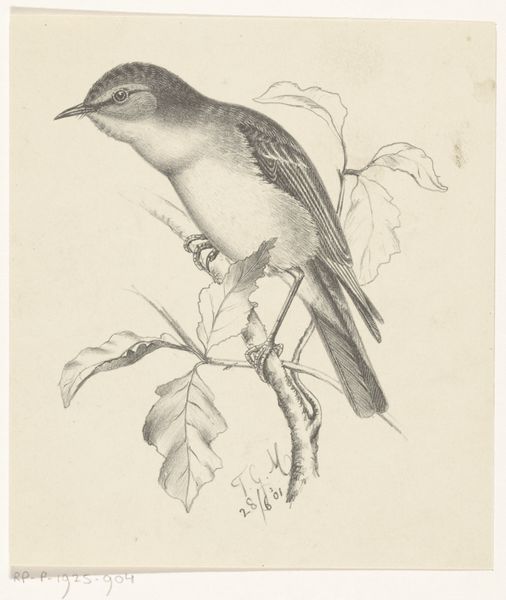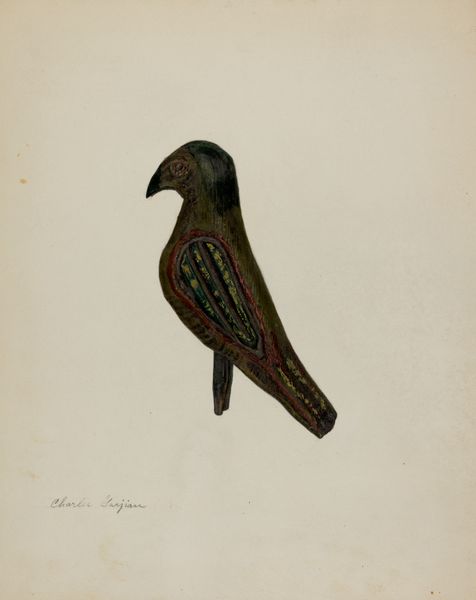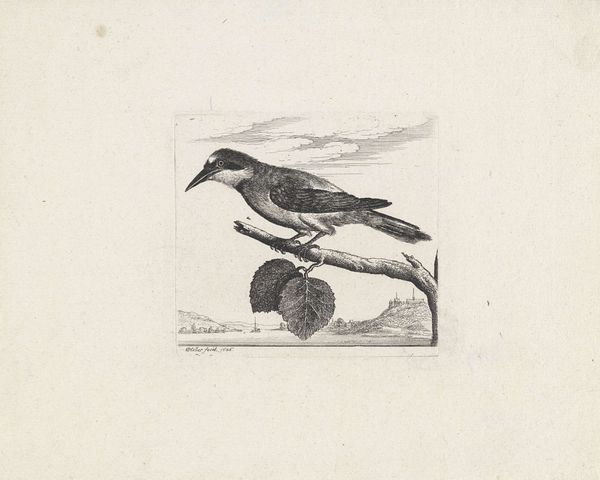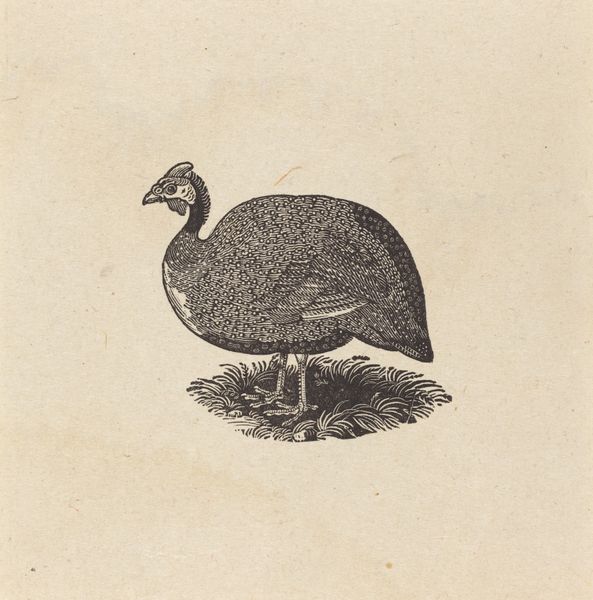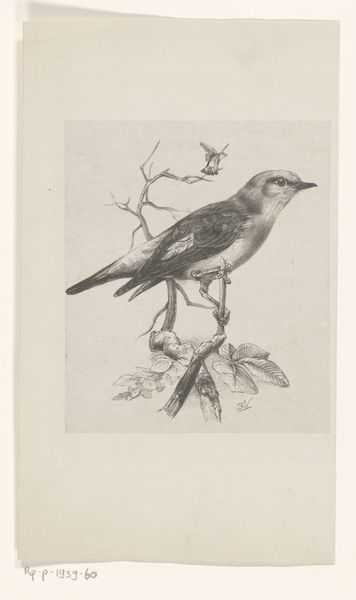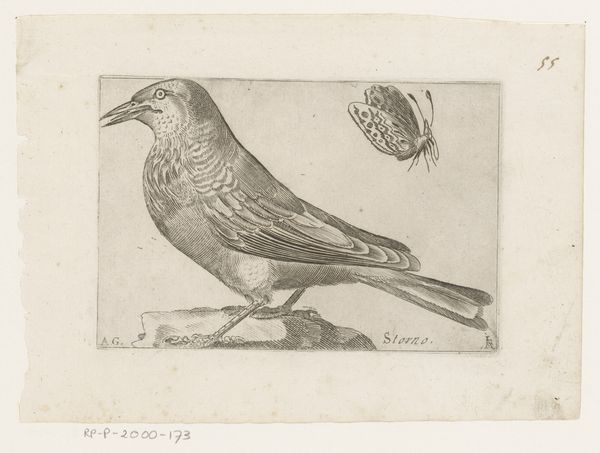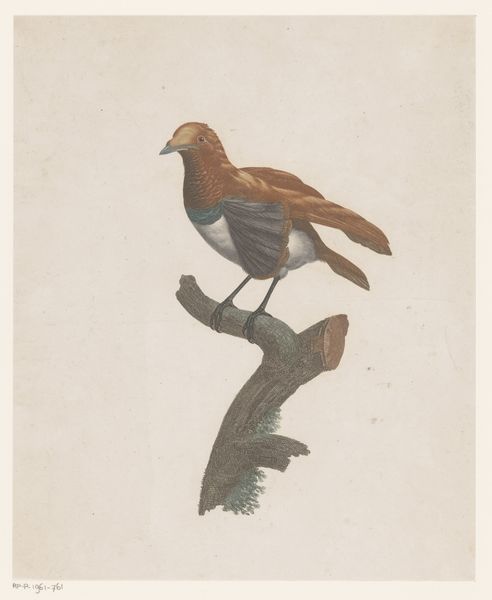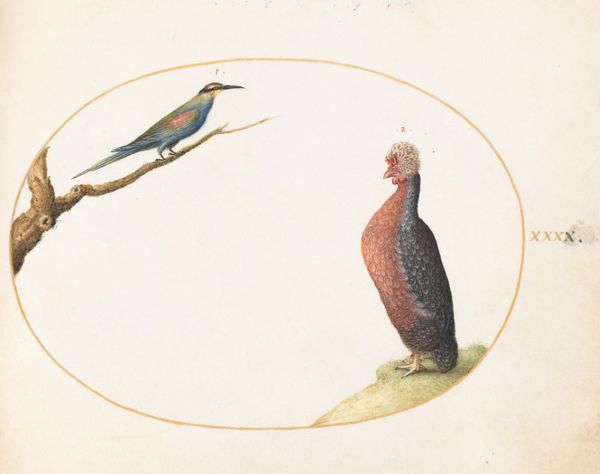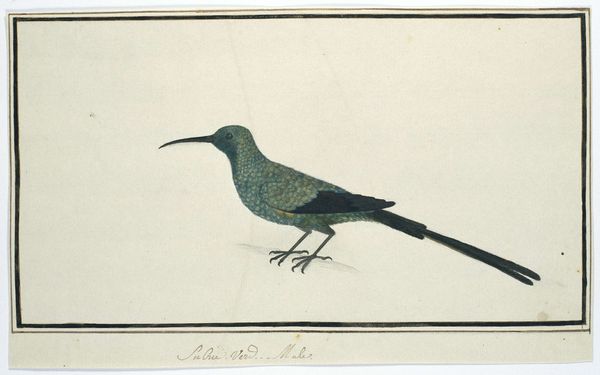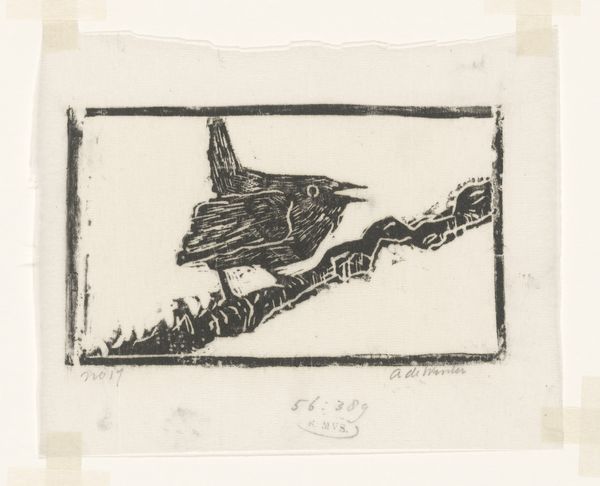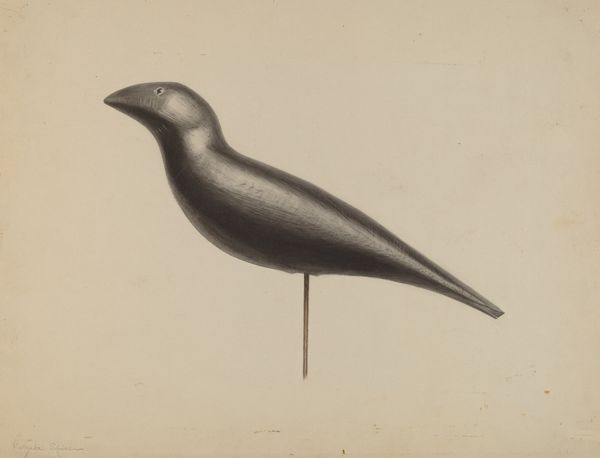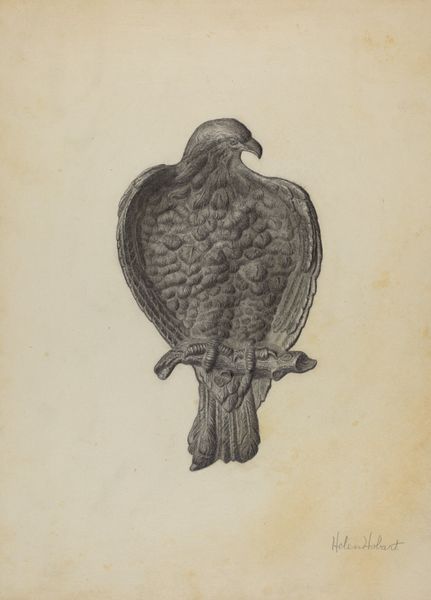
print, woodcut, engraving
# print
#
old engraving style
#
figuration
#
woodcut
#
line
#
engraving
#
realism
Copyright: National Gallery of Art: CC0 1.0
Curator: This print, dating back to around 1800, is titled "A Bird" and it is attributed to Thomas Bewick. You can see it's crafted through the techniques of woodcut and engraving, which were common at the time. Editor: There’s a stillness to this piece that’s striking. It's minimal, but that linework really brings out the texture of the feathers and bark. Almost feels like the bird is paused, listening. Curator: Exactly, the realism in Bewick's depiction reflects a broader shift towards natural history illustration gaining popularity. These weren’t just decorative pieces; they contributed to a growing understanding and appreciation of the natural world, and I would say also to its colonial exploitation and industrial transformation. Editor: And did this contextual shift in how animals and birds are represented mark new views of ecology, gender, or perhaps politics? Curator: That's a critical point. Think about how ideas around wilderness and dominion were developing then. The increasing classification of species intersects with notions of empire, control, and often the subjugation or "ordering" of natural and social systems... or races, if you will. Editor: I’m intrigued by how this seemingly simple image exists within that larger frame. There is an implication here regarding systems of domination. The detail is fascinating, the rendering has a sharp focus, however it brings more attention to the subject under analysis, so much so, that one might argue that its uniqueness as a species may risk erasure through colonial processes of assimilation or subordination to white European norms. Curator: Bewick certainly participated in shaping that worldview, producing accessible images for an expanding readership. These engravings shaped how people, particularly in Britain, perceived wildlife and its place in their society and in other societies that where undergoing exploitation. Editor: So, beyond its aesthetic charm, the print functions as a tool of social education—one that reinforces established power structures. Thanks for shedding a light on these considerations. Curator: My pleasure. Looking closely helps us read our visual and political landscape.
Comments
No comments
Be the first to comment and join the conversation on the ultimate creative platform.
